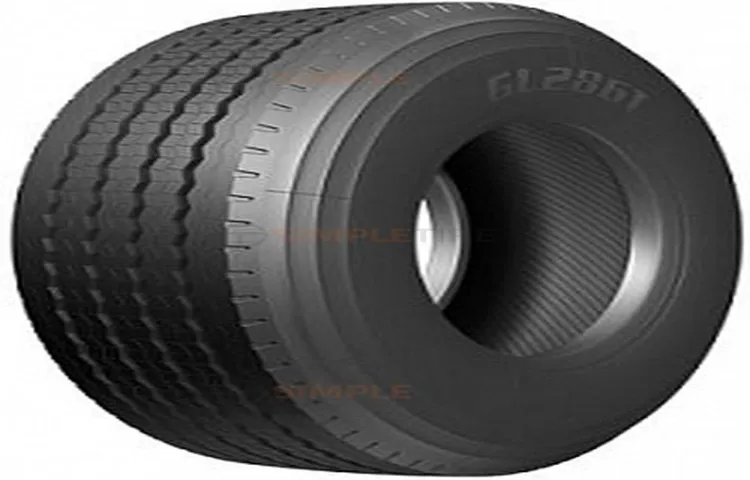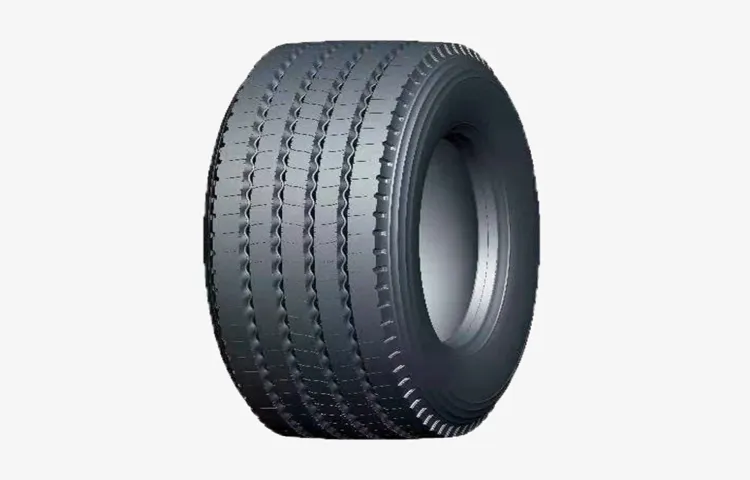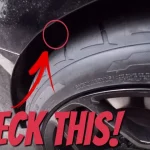If you’re in the market for a new set of tires, you may be wondering just how wide a 385 tire is. Tires come in all shapes and sizes, so it can be tricky to determine which one is best for your vehicle. The width of a tire can have a significant impact on how it performs on the road, so it’s essential to get it right.
In this blog post, we’ll take a closer look at 385 tires and provide you with all the information you need to make an informed decision. Whether you’re a car enthusiast or just trying to keep your vehicle running smoothly, read on to find out more about 385 tires and their width.
Table of Contents
Understanding Tire Measurements
Trying to figure out how wide a 385 tire is can be confusing if you’re not familiar with tire measurements. Fortunately, the number 385 refers to the tire’s section width, which is the distance between the outer edges of the tire’s sidewalls when it’s mounted on a rim and fully inflated. So a 385 tire would be roughly 385 millimeters wide.
However, it’s important to keep in mind that tire measurements are not always exact and can vary slightly based on factors such as the manufacturer and the type of tire. Other important tire measurements to consider include the aspect ratio, which is the height of the tire’s sidewall as a percentage of the section width, the diameter, which is the distance across the center of the tire, and the load index and speed rating, which indicate the weight and maximum speed capacity of the tire. So, when purchasing a tire, always consult the vehicle’s manual or a trusted tire professional to ensure you select the proper size and type for your specific needs.
Tire Size Notation
Tire Size Notation If you’re not familiar with tire measurements, it can be confusing to understand the numbers and letters on a tire’s sidewall. However, understanding tire size notation is essential for ensuring the optimal performance and safety of your vehicle. Tire measurements consist of three main components: width, aspect ratio, and rim diameter.
The width is the distance across the tire from sidewall to sidewall in millimeters. The aspect ratio is a percentage that represents the height of the tire’s sidewall compared to its width. Lastly, the rim diameter is the size of the wheel that the tire is meant to fit.
Tire size notation is typically expressed in a format like this: P215/60R1 The “P” stands for passenger car, and the number that follows represents the tire’s width in millimeters. The aspect ratio is represented by the second number, followed by the letter “R” which stands for radial construction.
The final number is the tire’s rim diameter in inches. It’s essential to note that not all tires will have the same size notation, and different vehicles may require different tire sizes. It’s crucial to consult your vehicle’s owner manual or speak with a professional tire technician to ensure you’re using the correct tire size for your vehicle.
By understanding tire size notation, you can make informed decisions about your tire needs and ensure optimal vehicle performance and safety.

Interpreting Tire Measurements
When it comes to your car’s tires, it’s critical to have a basic understanding of how to interpret tire measurements. These measurements provide valuable information that can help you determine whether the tires are appropriate for your car and driving needs. The most important tire measurements include tire width, aspect ratio, speed rating, and load index.
For example, tire width refers to the distance between the outer sidewall and the inner sidewall and can range from 165mm to 305mm. Aspect ratio, on the other hand, is the height of the tire’s sidewall compared to its width. As for the speed rating, it tells you how fast you can drive safely on the tire, and the load index shows how much weight the tire can carry safely.
By understanding these tire measurements, you can choose the right tire for your car and improve your overall driving experience.
Measuring a 385 Tire
Are you curious about how wide a 385 tire is? Well, the width of a tire is usually measured in millimeters. In the case of a 385 tire, the number 385 refers to the tire’s width in millimeters from sidewall to sidewall when it is mounted and inflated on a rim. So, if you’re looking for a tire that is nearly 1
2 inches wide, a 385 tire would be the perfect fit for you. It’s important to note that tire size can vary based on the manufacturer and model, so make sure to double-check the specs before making a purchase. Additionally, be sure to consider other factors such as the tire’s aspect ratio and load capacity to ensure that it’s the right tire for your vehicle.
Using a Tape Measure
When it comes to measuring a 385 tire, using a tape measure may seem intimidating at first, but it’s actually a straightforward process. First, locate the tire’s width by measuring across the widest part of the tire. Next, measure the diameter of the rim by running the tape measure across the center of the wheel.
Once you have these measurements, you can determine the overall size of the tire. Remember, it’s important to measure with precision to ensure you get the right size tire for your vehicle. Don’t worry if you’re not a math wiz, you can find tire calculators online that will do the calculations for you.
So when you’re ready to replace your tire, grab your tape measure and get started!
Using a Tire Gauge
If you’re looking to measure the pressure of a 385 tire, a tire gauge can come in handy. First, remove the valve cap from the tire’s valve stem. Then, press the tire gauge onto the valve stem and hold it firmly in place until the gauge’s reading stabilizes.
The gauge should display the current air pressure in the tire. If the reading is lower than the recommended pressure, add air until the recommended pressure is reached. However, if the reading is higher than the recommended pressure, release some air until the recommended pressure is reached.
Remember to replace the valve cap once you’re done. By regularly monitoring and maintaining your tire pressure, you can ensure optimal performance and safety while driving.
Consulting Manufacturer Specifications
When it comes to measuring a 385 tire, it’s important to consult the manufacturer specifications to ensure accuracy. While it may seem like a simple task, there are actually several factors to consider when measuring a tire. The first step is to determine the width of the tire, which should be measured from sidewall to sidewall.
Next, you’ll want to measure the aspect ratio, which is the height of the tire’s sidewall as a percentage of the width. Finally, you’ll need to measure the diameter of the tire, which should be done by measuring from one end of the tire’s inner rim to the other. By consulting the manufacturer specifications, you’ll be able to get precise measurements for your 385 tire, ensuring that it fits properly and performs as it should.
So, next time you’re measuring a tire, be sure to refer to the manufacturer’s instructions for the most accurate results.
Common Widths for a 385 Tire
If you’re wondering how wide a 385 tire is, there are a few common widths that you should be aware of. Generally speaking, a 385 tire will range in width from around 14 inches to 15 inches, depending on the specific make and model. Of course, there may be some variation based on the manufacturer and intended use of the tire.
For example, a 385 tire designed for off-road use may be wider than one intended for highway driving. It’s also worth noting that tire width can impact other important factors such as grip, handling, and fuel efficiency. So, if you’re in the market for a 385 tire, be sure to consider these factors alongside the width to ensure you select a tire that meets your needs and driving style.
Standard Width
When it comes to the width of a 385 tire, there are a few common options to choose from. The most standard width for this type of tire is around 14 inches. This is a versatile option that can work well for a variety of vehicles and driving conditions.
However, there are also narrower and wider widths available, such as 15 or 15 inches.
It’s important to choose the right width for your specific needs, as different widths can affect handling, performance, and overall safety. Talk to a tire specialist or mechanic to determine the best width for your vehicle and driving habits. By choosing the right width for your 385 tire, you can ensure optimal performance and long-lasting durability on the road.
Narrow vs Wide Widths
When it comes to the width of a 385 tire, there are a few standard sizing options available. The narrow width option for a 385 tire typically falls between 11 and 12 inches, while the wider option typically falls between 15 and 14 inches.
So, which width is right for you? Well, it ultimately depends on your vehicle and what you plan to do with it. If you want a tire that provides better handling and responsiveness, then a narrower width may be the way to go. However, if you’re looking for a tire that offers better stability and traction on uneven terrain, then a wider width might be more appropriate.
Ultimately, it’s best to consult with a professional to determine which width is best for your vehicle and driving needs.
Conclusion and Additional Resources
In conclusion, trying to determine the width of a 385 tire is like trying to solve a riddle without any clues. It’s a mystery that only the tire gods can unravel. So, instead of wasting time trying to figure it out, let’s just sit back and appreciate the fact that 385 tires are wider than our imaginations, and leave the exact measurements to the engineers and tire experts.
After all, the fun is in the drive, not the math!”
FAQs
1. What is the meaning of the number 385 in a tire’s measurement?
The number 385 refers to the tire’s width in millimeters.
2. Are all 385 tires the same width?
No, there may be slight variations in width among different brands and models of 385 tires.
3. How wide is a typical 385 tire?
A typical 385 tire has a width of approximately 15.16 inches.
4. Can a 385 tire fit on any car?
No, a 385 tire may not fit on all cars. It is important to check your car’s recommended tire size before purchasing.
5. What are some popular brands of 385 tires?
Some popular brands of 385 tires include Michelin, Goodyear, Bridgestone, and Continental.
6. Are 385 tires suitable for all weather conditions?
It depends on the specific tire and its intended use. Some 385 tires may be designed for specific weather conditions, such as winter tires for snow and ice.
7. How long do 385 tires typically last?
The lifespan of a tire can vary depending on factors such as driving habits, road conditions, and regular maintenance. However, a well-maintained 385 tire can last up to 50,000 miles.
8. Can a 385 tire be repaired if it gets a puncture?
A8. It may be possible to repair a punctured 385 tire, depending on the location and severity of the puncture. However, it is always recommended to have a professional assess the damage and make a recommendation.
9. How can I ensure my 385 tires last as long as possible?
To maximize the lifespan of your 385 tires, make sure to regularly check and maintain proper inflation levels, rotate tires regularly, and avoid harsh driving habits such as sudden braking or acceleration.
10. Are 385 tires more expensive than other tire sizes?
The cost of a 385 tire can vary depending on the specific tire and brand, but it may be more expensive than some other tire sizes due to its larger size and specialized application.



